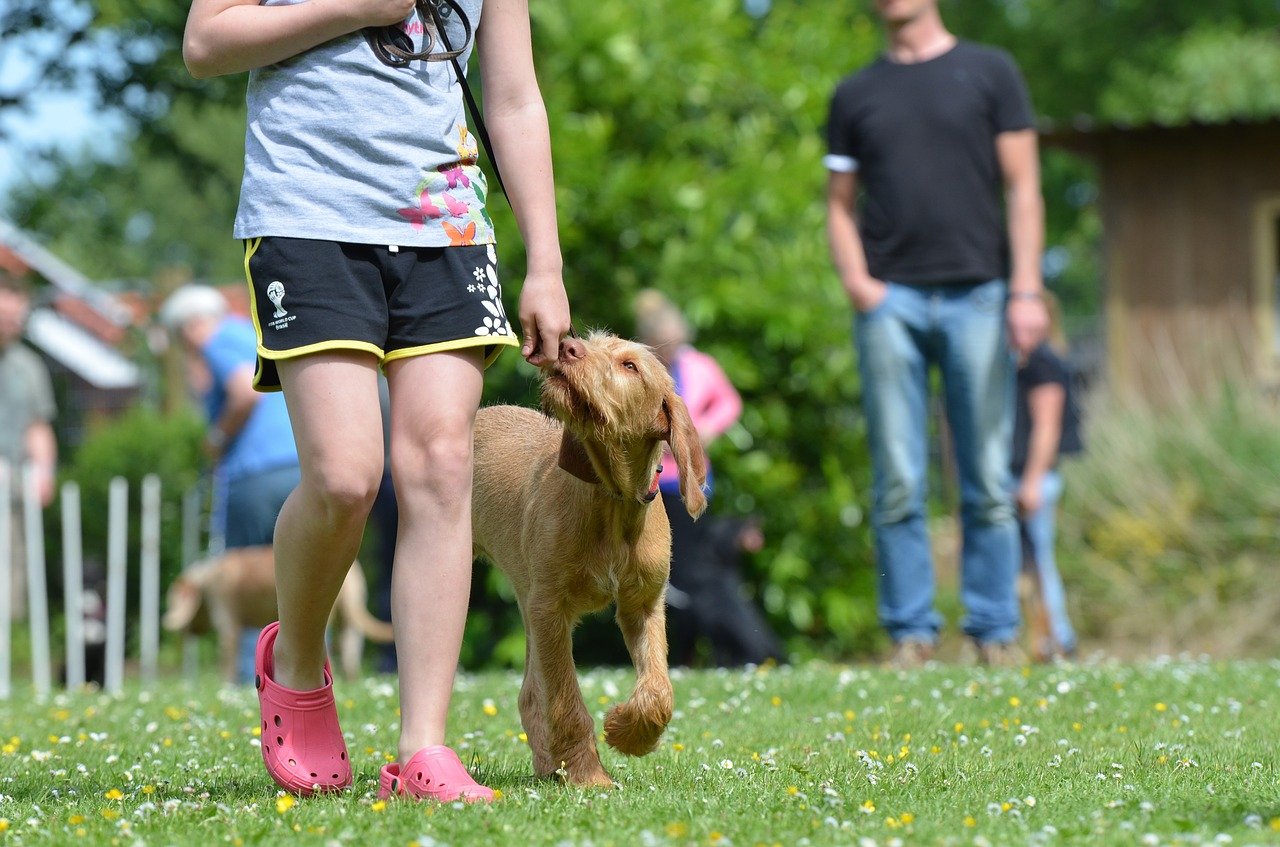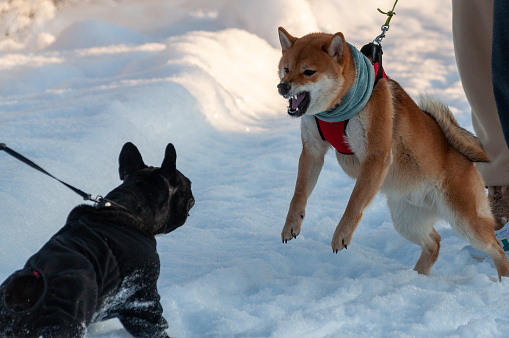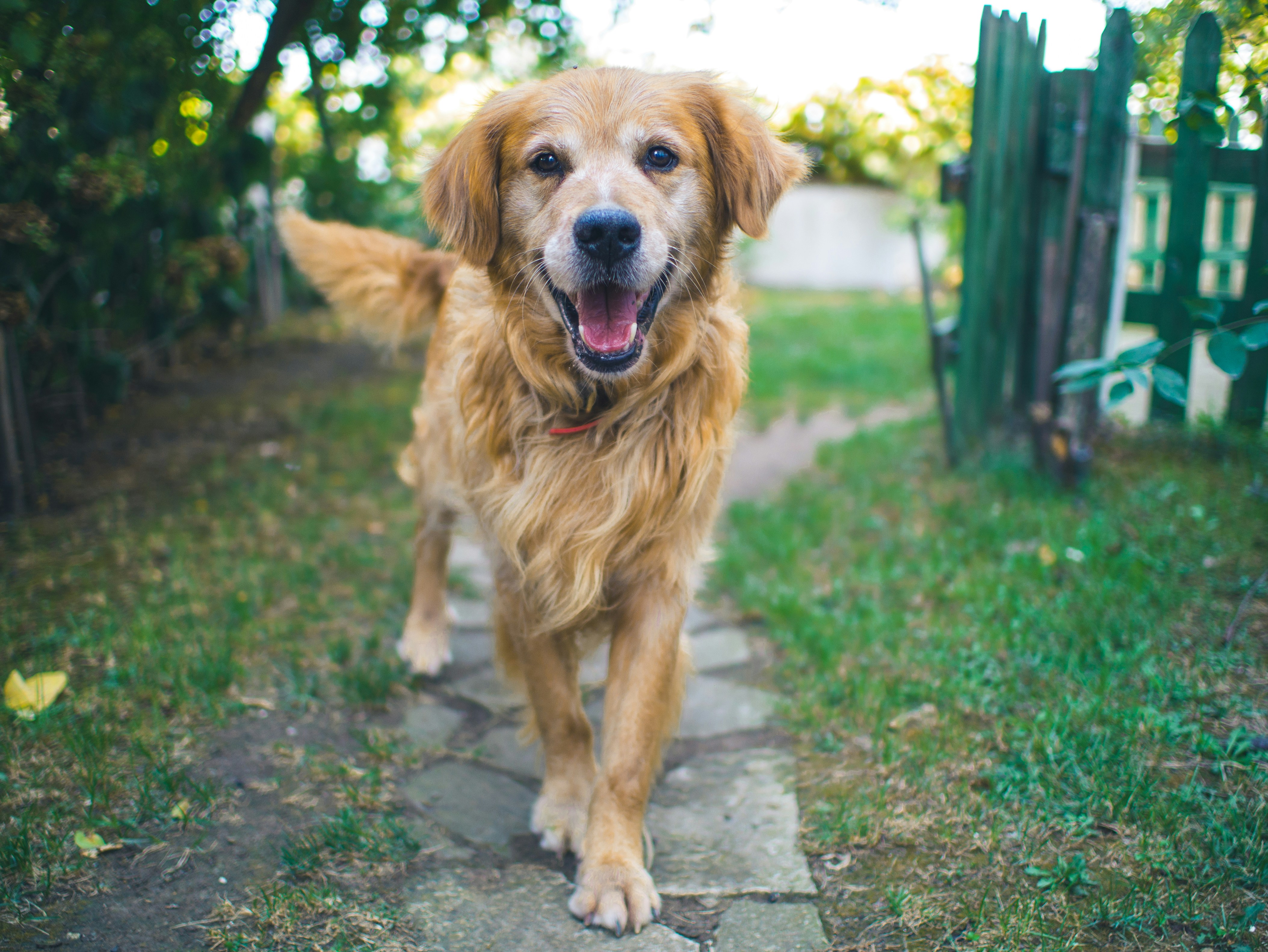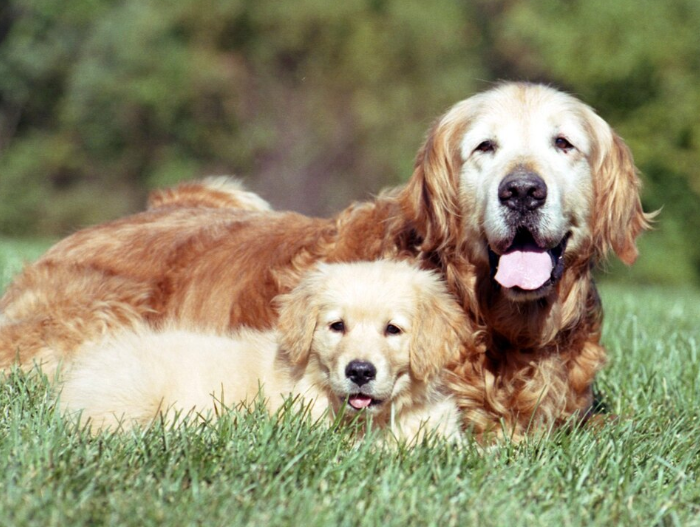
For others, however, age is just a number and not a defining measure of what we should do with our lives.
But what about dog training? When it comes to service dogs, is age just a number or a clear indicator of a dog’s suitability for training?
Today, we’ll explore this topic and hope to help you if you’re on the fence about whether to embark on a training journey with your furry friend.

Puppy Training: Start Early to Build a Strong Foundation
Most service dogs begin their training while they are still puppies, often as young as 8 weeks old. The age of 8 weeks is considered the minimum age at which puppies should be separated from their mother. This timing is crucial because the first 8 weeks of a puppy’s life are vital for their physical, emotional, and social development. During this period, puppies learn essential behaviors from their mother and littermates, such as bite inhibition, communication cues, and social boundaries.
Early socialization and exposure to different environments are crucial during this developmental stage. Just like human babies, puppies are like sponges-they quickly absorb new experiences, including sights, sounds, and smells. This makes it the ideal time to begin foundational training such as house training, impulse control, crate training, basic obedience training, including ‘sit’, ‘stay’, and ‘come’, leash manners, and, of course, socialization with other animals and people.
By exposing their young furry friend to a variety of situations and environments, the handler or trainer (depending on who is conducting the training) gains valuable insight into potential triggers and behavioral issues, allowing them to address these early on. Additionally, regular exposure to different stimuli helps desensitize the puppy to common distractions such as loud noises, crowded places, or unfamiliar objects.
Starting training and socialization early helps shape a dog’s temperament and behavior, and gives their handlers/trainers a good sense of whether the dog is suited for service work.

Advanced Training: Between 12–24 Months
After laying a solid foundation, puppies progress to more advanced, task-specific training, which is tailored to the handler’s disability. Specific service dog training typically takes place between 12 and 24 months of age. It’s important to note that physically demanding tasks, such as standing up on two feet and pushing a cart or opening/closing doors, require puppies to have reached full physical maturity and have a fully developed bone structure.
Some common service dog tasks can include, but are not limited to:
-Guiding individuals with visual impairments;
-Mobility assistance for those who use wheelchairs / have mobility issues;
-Medical alert tasks, such as detecting medical episodes like too high or too low blood sugar levels or seizures;
-Alerting individuals with hearing issues to important sounds in their surroundings;
-Psychiatric service dog tasks, like interrupting repetitive and/or harmful behaviors, grounding the handler during panic attacks or dissociative episodes, providing deep pressure therapy (DPT), reminding the owner to take medication, etc.
At this stage, service dogs are taught to generalize the learned behaviors, which means they are trained across different locations and situations. This helps ensure they can reliably perform their tasks in both calm and distracting environments.
Service dogs may begin public access training in real-world settings such as malls, restaurants, airports, and public transportation. Dogs are also evaluated for consistent behavior, emotional resilience, and their ability to stay calm and focused under pressure.
By the time a service dog is placed with a handler, they are typically at least 18 to 24 months old. The dog has undergone many hours of carefully structured training, ensuring they’re fully prepared to provide reliable support.

Is It Too Late to Train an Adult Dog?
Pros
While training a young dog is the ideal scenario, it is absolutely possible to train an adult dog as a service animal. This is especially true in cases where the dog has already demonstrated a calm, focused temperament and solid obedience skills. Of course, good physical health is also a key factor.
Some adult dogs are naturally attentive, responsive to handlers, and eager to please them, which makes them great candidates for service work despite their age. That said, if you have a beloved furry friend and are looking for methods to mitigate the symptoms of a health condition, you may consider training them as your reliable and loyal service animal. Depending on where you live, this may be legally permitted, for example, in the US, the UK, the Netherlands, Australia, etc.
Luckily, many countries/regions offer self-trained teams the option to be evaluated by an accredited local trainer to be officially recognized as a service/assistance dog team.
Even if you still don’t have a paw companion, you may consider adopting a rescued or rehomed adult dog and either training them yourself or having them trained as a service dog. Shelters and rescue organizations may collaborate with trainers to assess whether a dog is emotionally stable, people-oriented, and capable of learning complex tasks. This path not only offers a second chance to a loving animal but also provides an opportunity for someone in need of assistance to be teamed with a capable paw partner.
Cons
Training an adult dog may also come with its challenges. Adult dogs have already developed personalities and temperaments, as well as habits learned over time. You may have to correct deeply rooted habits or address old traumas related to negative experiences in the past, typically when training a rescue dog.
Common behavioral issues include pulling on a leash, reactivity towards other dogs or unknown people, as well as poor impulse control.
Adult dogs can be harder to shape when it comes to temperament, so working through fear or aggression may take more time compared to training a puppy. Building a strong bond might also take longer, especially if the dog has been through trauma or hasn’t had consistent handling in the past.
Despite these obstacles, adult dogs are fully capable of learning new tasks, especially when trained with patience, consistency, and positive reinforcement. In fact, some adult dogs may advance more quickly through training than puppies because they have longer attention spans and more developed focus.
For handlers who need a service dog urgently or don’t have the time to raise and train a puppy, starting with an adult dog who is healthy and people-oriented can be a practical and rewarding alternative. With the right match, a solid training plan, and ongoing support, adult dogs can become excellent service animals!
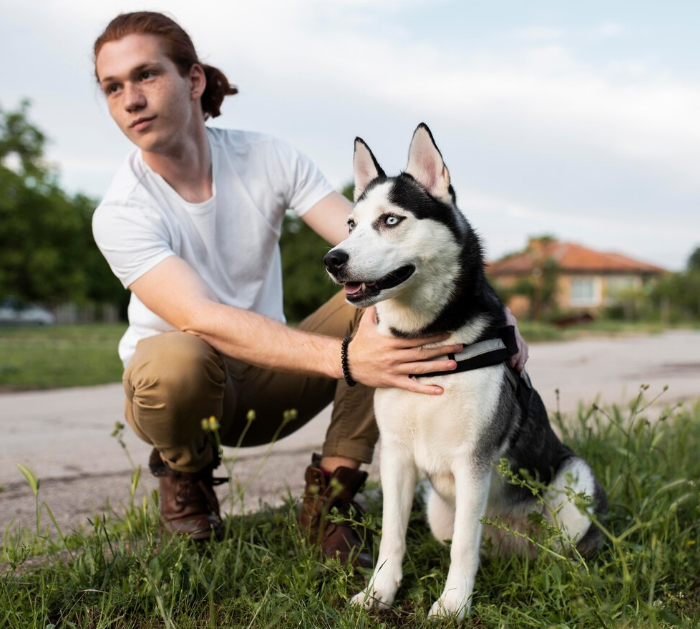
Owner-Training vs. Professional Training
One of the most important decisions a person must make when preparing to welcome a service dog into their life and become a part of an inseparable team is whether to engage in owner-training or obtain a professionally trained service dog through an established program. Of course, a third alternative is also available: having their own dog trained by a professional trainer.
Each approach has its benefits and challenges, and the choice often depends on the individual's needs, lifestyle, budget, and experience with dogs.
Professional Training
In professional or program-based training, service dogs are typically selected as puppies by specialized organizations that assess their temperament, genetics, and suitability for service work. These dogs are raised and trained by professionals, often starting at 8 weeks old. The program typically follows a structured curriculum and standardized protocols.
The advantage of this route is reliability, as service dogs obtained through specialized organizations are fully task-trained before placement and are well-socialized for public access work. Many organizations also provide post-placement support and refresher training.
However, the high costs associated with the process, often reaching up to $20,000 or more, can be a major barrier. These expenses, along with the ongoing costs of caring for the dog, prevent many people from choosing this option.
There are also non-profit organizations that provide trained service dogs. However, due to high demand, wait lists are often long, and applicants may need to wait one or several years to receive a trained service dog.
Additionally, a key factor that’s often overlooked is the future handler’s involvement in the training process. There’s a significant difference between actively participating in the training and learning alongside your dog and being matched with a fully trained service dog while you’re still learning how to be an effective handler and communicate with them.
Owner/Self-training
On the other hand, owner-trained service dogs are trained by the owner themselves, sometimes with the help of a private trainer or online course. This route can begin with a puppy or an adult dog, depending on when the owner has gotten their furry friend.
Owner-training a service dog requires the handler to be actively engaged in the process and get to know the dog on a deeper level. However, throughout the process, the team strengthens its bond, and the handler can tailor the training to their specific needs and lifestyle. Needless to say, this option is way more affordable than obtaining a trained service dog.
However, owner-training requires a time commitment, patience, consistency, and a willingness to address issues along the way.
Individuals who have embarked on a self-training journey may reach out to a local trainer or enroll in a structured program, including tutor support, to get the best of both worlds—flexibility to train at their own pace and adapt the training to their needs, while also benefiting from well-structured lessons and professional guidance.
Ultimately, each path has its pros and cons. If you are looking for the right choice, just take some time to honestly evaluate your level of commitment, lifestyle, goals, and support system. Whether trained by a professional trainer or team or by the handler themselves, often with the help of a structured program, what matters most is that the dog is well-trained, task-reliable, and able to meet the specific needs of their human partner.




